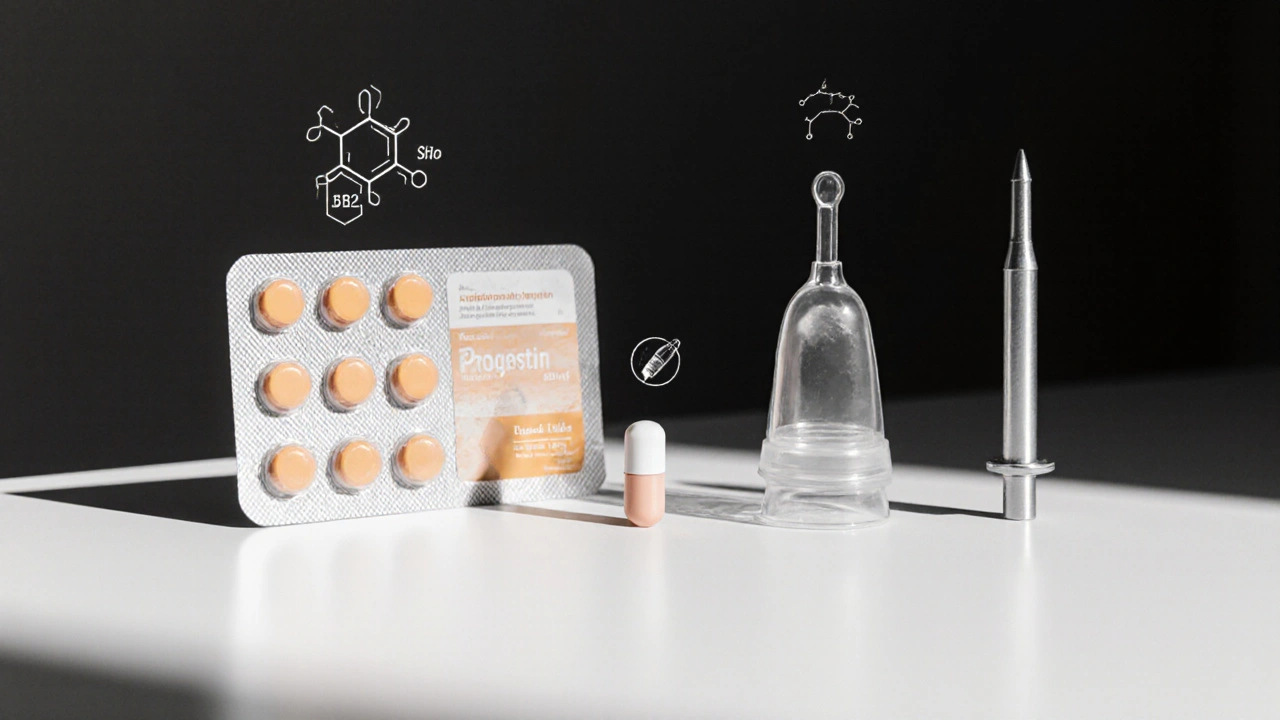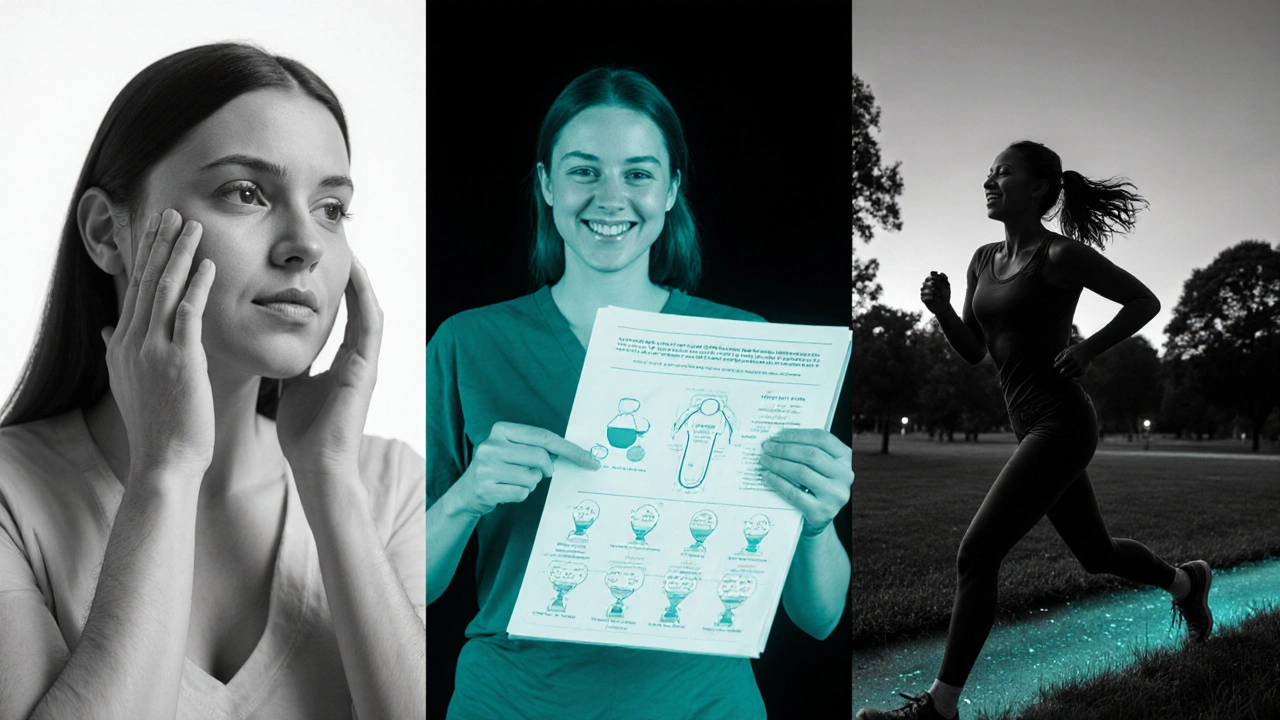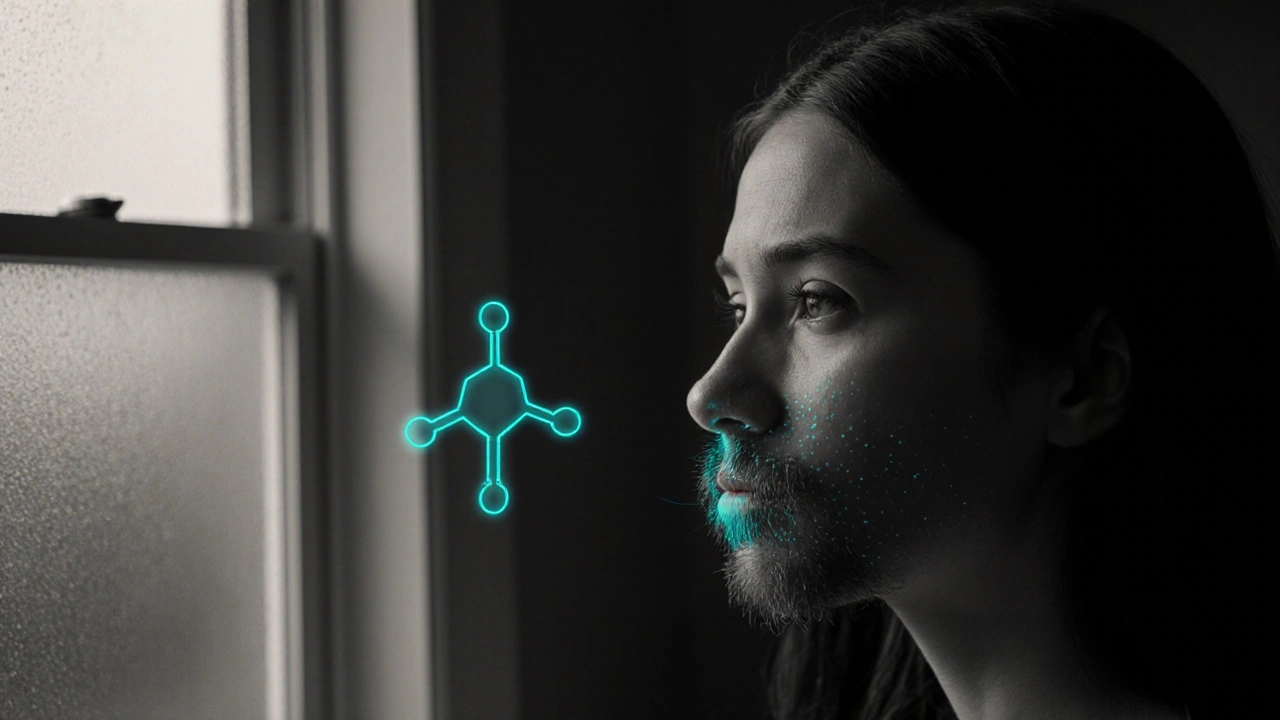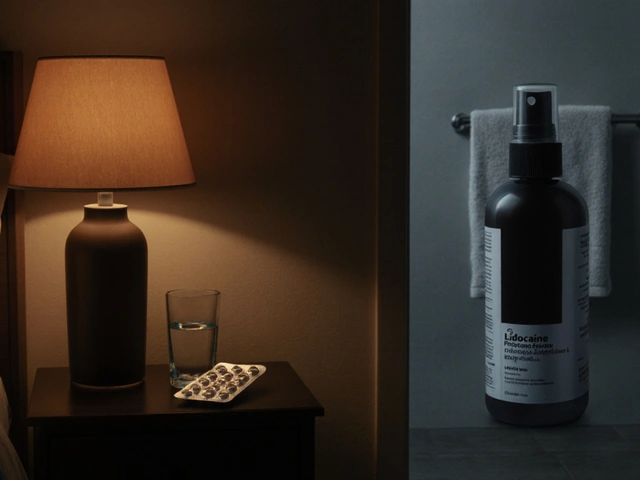Quick Takeaways
- Combined oral contraceptives are the most studied birth‑control option for reducing hirsutism.
- Progestin‑only pills and hormonal IUDs can help some women, but they lack the anti‑androgen effect of estrogen.
- Choosing a method depends on personal health, age, clotting risk, and how severe the hair growth is.
- Side effects such as mood changes or weight gain vary widely; monitoring is key.
- Always discuss hormonelevels, underlying conditions like PCOS, and lifestyle factors with a clinician before starting any contraceptive.
When dealing with Hirsutism is an excess of coarse, pigmented hair in typical male distribution areas on a woman’s body, the first question many ask is whether birth control can make a difference. The short answer: yes, certain hormonal contraceptives can tone down the hair‑growth drive, but the details matter. This guide walks through how different birth‑control methods interact with the hormones that cause hirsutism, what you should look out for, and practical steps to find the right fit.
Why Hormones Drive Hirsutism
At the core of most hirsutism cases is an over‑exposure of hair follicles to androgens, especially testosterone is the primary male sex hormone that, when present in excess, stimulates the conversion of fine vellus hair to thick terminal hair. Women produce testosterone naturally in the ovaries and adrenal glands, but conditions like polycystic ovary syndrome (a common endocrine disorder marked by irregular cycles and elevated androgens) amplify the signal.
When androgen levels rise, the scalp‑side, facial‑side, and body‑side hair follicles receive a stronger push to grow. Birth control can intervene by altering the hormone balance-adding estrogen, reducing ovarian androgen output, or providing a progestin that blocks androgen receptors.
How Birth Control Affects Androgen Levels
Not all contraceptives are created equal. The main categories relevant to hirsutism are:
- Combined oral contraceptives (COCs) (pills that contain both estrogen (usually ethinyl estradiol) and a synthetic progestin)
- Progestin‑only pills (POPs) (also called mini‑pills, they contain only a synthetic progestin)
- Hormonal intrauterine devices (IUDs) (devices that release a low dose of levonorgestrel directly into the uterus)
- Implants (sub‑dermal rods that continuously release a progestin such as etonogestrel)
COCs are the only class that adds estrogen, which increases the liver’s production of sex hormone‑binding globulin (SHBG) (a protein that binds free testosterone, making it less available to hair follicles). Higher SHBG means less free testosterone, which usually translates to slower hair growth.
Progestin‑only methods don’t raise SHBG, and some progestins (like drospirenone) have mild anti‑androgen properties, while others (like levonorgestrel) can actually worsen hirsutism. Implants and hormonal IUDs release levonorgestrel, so they may offer little benefit for hair growth and could even aggravate it for sensitive users.

Choosing the Right Method for Hirsutism
Here’s a quick decision matrix that breaks down the core attributes you’ll likely weigh.
| Method | Estrogen Content | Anti‑Androgen Effect | Typical Impact on Hirsutism | Common Side Effects |
|---|---|---|---|---|
| Combined oral contraceptive (ethinyl estradiol + drospirenone) | Yes (30‑35µg) | Strong (increases SHBG, drospirenone blocks androgen receptors) | Reduces hair growth in 60‑80% of users after 3‑6months | Nausea, breast tenderness, rare clot risk |
| Combined oral contraceptive (ethinyl estradiol + levonorgestrel) | Yes (20‑35µg) | Moderate (estrogen raises SHBG, levonorgestrel has mild androgenic activity) | Modest improvement for many; less reliable than drospirenone | Headache, mood swings, weight changes |
| Progestin‑only pill (norethindrone) | No | Weak (no SHBG increase, norethindrone slightly androgenic) | Usually no change; occasional worsening | Breakthrough bleeding, irregular cycles |
| Hormonal IUD (levonorgestrel) | No | Weak‑to‑none (levonorgestrel can be mildly androgenic) | Little to no effect on hair; may worsen in sensitive women | Spotting, cramping, rare perforation |
| Implant (etonogestrel) | No | Weak (no SHBG boost) | Generally neutral; some users report slight increase | Irregular bleeding, weight gain |
When hirsutism is a primary concern, most clinicians start with a COC that contains drospirenone or another anti‑androgenic progestin. If estrogen is contraindicated-say, due to a history of blood clots-then a non‑hormonal method (condom, copper IUD) may be paired with a separate anti‑androgen medication like spironolactone.
Managing Expectations and Timeline
Hair growth cycles aren’t instant. Even if the hormone environment improves, existing terminal hairs take weeks to enter a resting phase before they shed. Most women notice a visible softening of hair after 3 to 6months of consistent contraceptive use. Patience and regular follow‑up with your provider are essential.
It’s also worth noting that birth control does not cure the underlying endocrine issue. If PCOS or adrenal hyperplasia drives the excess androgens, you’ll likely need a longer‑term plan that includes lifestyle changes (weight management, low‑glycemic diet) and possibly medication beyond contraception.
Potential Side Effects and How to Mitigate Them
Any hormonal method brings a risk‑benefit profile. Here are the most common concerns for women using birth control to treat hirsutism:
- Weight changes: Some users report fluid retention or appetite shifts, especially with higher‑dose estrogen pills. Choosing a low‑dose COC often reduces this.
- Mood swings or depression: Estrogen can affect serotonin pathways; if you have a personal or family history of mood disorders, discuss alternatives with your doctor.
- Bleeding irregularities: Progestin‑only methods are notorious for spotting. A COC with a stable estrogen dose typically gives more predictable cycles.
- Blood clot risk: Elevated in smokers over 35 and in women with inherited clotting disorders. A copper IUD or non‑hormonal barrier method may be safer in those cases.
- Skin changes: While many see acne improve due to lower androgen levels, a minority experience breakout as hormones adjust. A brief course of a topical retinoid can help.
Tracking side effects in a simple journal-date, symptom, severity-helps your clinician fine‑tune the prescription.

Putting It All Together: A Practical Checklist
- Confirm a medical evaluation to rule out underlying conditions (PCOS, adrenal tumors, medication side effects).
- Discuss any personal clotting history, smoking status, or migraines with your provider.
- Select a COC with an anti‑androgenic progestin (drospirenone, cyproterone acetate) if estrogen is safe for you.
- If estrogen is contraindicated, consider a combination of a non‑hormonal method plus an anti‑androgen drug like spironolactone.
- Allow at least three months before judging effectiveness; expect gradual hair softening, not immediate removal.
- Monitor side effects regularly; adjust dose or switch method if problems persist.
- Complement hormonal treatment with lifestyle measures: maintain a healthy weight, balanced diet, and regular exercise.
Frequently Asked Questions
Can birth control completely eliminate hirsutism?
No. Hormonal contraceptives can lower the androgen drive and soften existing hair, but they rarely erase hair permanently. For lasting removal, many combine contraception with laser therapy or electrolysis.
Is a progestin‑only pill ever a good choice for hirsutism?
Only in special cases where estrogen is unsafe (e.g., history of clots, severe migraines). Even then, the pill usually won’t improve hair growth and may need to be paired with another anti‑androgen medication.
How long does it take to see a reduction in unwanted hair?
Most women notice a change after 3-6months of consistent use. Full results can take up to a year, especially if hair follicles have been exposed to high androgen levels for years.
Are there any natural alternatives that work as well as birth control?
Lifestyle tweaks (weight loss, low‑glycemic diet) can lower insulin and indirectly reduce androgen production, but the effect is generally milder and slower than hormonal contraception.
What should I do if I experience severe side effects?
Stop the method only after consulting your provider. They may switch you to a different formulation or suggest a non‑hormonal approach combined with a medication like spironolactone.
Next Steps for Women Facing Hirsutism
1. Schedule a hormone panel. Get baseline levels of testosterone, DHEAS, LH, and SHBG. 2. Discuss birth‑control history. Mention any past clot issues, migraines, or smoking. 3. Choose a method. If estrogen is safe, a drospirenone‑based COC is usually first‑line. 4. Set a review date. Plan a follow‑up at 3 months to assess hair softness and side effects. 5. Consider adjuncts. Laser hair removal, topical eflornithine cream, or spironolactone can boost results. 6. Track lifestyle. Keep a simple log of weight, diet, and stress-these factors influence androgen levels.
Remember, hirsutism and birth control is a partnership between your body and the hormonal regimen you choose. With the right information and a proactive clinician, you can tame unwanted hair while staying protected against pregnancy.







7 Comments
Thanks for sharing this detailed guide! It's really helpful to see the pros and cons of each method laid out side by side.
For anyone starting out, I’d suggest keeping a simple spreadsheet of side effects and how your hair feels over time – it makes those follow‑up appointments with your doctor much smoother.
Remember, patience is key; the hair follicles need a few months to respond to the hormonal shifts.
Stay positive and trust the process – you’ve got this!
Oh wow, another “must‑track spreadsheet” – because who doesn’t love endless data entry?
Honestly, if you’re already drowning in period trackers, adding hair growth charts is just defnitely overkill.
But hey, at least the pills give you something to complain about besides the mood swings.
What they don’t tell you is that big pharma is using these contraceptives to keep us chemically dependent.
Every time you log a side‑effect, they’re gathering more data to fine‑tune the market.
Stay skeptical – the “anti‑androgen” label might just be a marketing gimmick.
Totally get the vibe! 😅 Honestly, I’ve started a little diary with emojis to keep it fun – 🌸 for good days, 😩 for mood swings.
It’s amazing how a simple smiley can remind you that you’re not alone in this journey.
Keep sharing, and we’ll all ride the hormonal roller‑coaster together! 🚀
One cannot discuss hirsutism without first confronting the philosophical burden of bodily autonomy.
The interplay between estrogen and testosterone becomes a metaphor for the tension between societal expectations and personal agency.
Science offers us the tools – SHBG levels, androgen receptors – yet the ultimate decision resides in the realm of lived experience.
Emotionally, the process can feel like a negotiation with one’s own biology, a quiet dialogue that unfolds over months.
Patience, as the guide suggests, is essential; hair does not vanish overnight, it cycles through growth, rest, and shedding.
Understanding that each follicle follows its own timetable can alleviate the frustration of perceived stagnation.
Moreover, the psychological impact of visible hair can be profound, influencing self‑esteem and social interaction.
By integrating lifestyle changes – diet, exercise, stress management – we acknowledge that hormones do not act in isolation.
The addition of anti‑androgenic agents, such as drospirenone, serves as a bridge between biochemical modulation and aesthetic desire.
Yet we must remain vigilant about side effects, for the same hormonal shifts that reduce hair can also affect mood and weight.
Regular check‑ups become a ritual of self‑care, a moment to reassess goals and adjust treatment.
In this ongoing journey, the combination of medical insight and personal reflection creates a holistic approach.
Ultimately, the goal is not the complete eradication of hirsutism, but the empowerment to manage it on one's own terms.
Thus, the guide serves not only as a medical reference, but as a manifesto for bodily self‑determination.
Honestly, all this philosophical fluff feels a bit overblown; at the end of the day, it’s just a pill and a hormone.
People in the US love to turn simple medical choices into deep existential crises.
If you want a practical answer: pick a drospirenone COC and move on.
That’s a fair point, but a little nuance can help people feel more confident about their choice.
When you explain the anti‑androgenic mechanism in plain language, the decision becomes less intimidating.
Encourage your friends to keep a simple log – even a one‑line note each week can illuminate patterns.
Remember, support from a trusted clinician combined with personal observation yields the best outcomes.